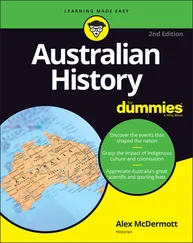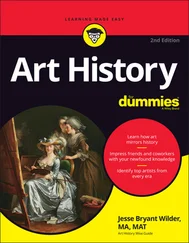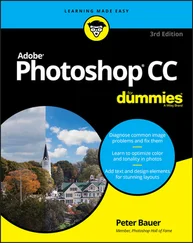Peter Haugen - World History For Dummies
Здесь есть возможность читать онлайн «Peter Haugen - World History For Dummies» — ознакомительный отрывок электронной книги совершенно бесплатно, а после прочтения отрывка купить полную версию. В некоторых случаях можно слушать аудио, скачать через торрент в формате fb2 и присутствует краткое содержание. Жанр: unrecognised, на английском языке. Описание произведения, (предисловие) а так же отзывы посетителей доступны на портале библиотеки ЛибКат.
- Название:World History For Dummies
- Автор:
- Жанр:
- Год:неизвестен
- ISBN:нет данных
- Рейтинг книги:3 / 5. Голосов: 1
-
Избранное:Добавить в избранное
- Отзывы:
-
Ваша оценка:
- 60
- 1
- 2
- 3
- 4
- 5
World History For Dummies: краткое содержание, описание и аннотация
Предлагаем к чтению аннотацию, описание, краткое содержание или предисловие (зависит от того, что написал сам автор книги «World History For Dummies»). Если вы не нашли необходимую информацию о книге — напишите в комментариях, мы постараемся отыскать её.
World History For Dummies,
For Dummies
World History For Dummies
World History For Dummies — читать онлайн ознакомительный отрывок
Ниже представлен текст книги, разбитый по страницам. Система сохранения места последней прочитанной страницы, позволяет с удобством читать онлайн бесплатно книгу «World History For Dummies», без необходимости каждый раз заново искать на чём Вы остановились. Поставьте закладку, и сможете в любой момент перейти на страницу, на которой закончили чтение.
Интервал:
Закладка:
Wars since WWII have been somewhat contained to a region or fought with an understanding that neither side would escalate the weaponry too far. During the Vietnam War, a 1960s-’70s conflict between communist North Vietnam and the nationalist government of South Vietnam, each side had allies with deep pockets and nuclear weapons. The Soviet Union and China provided supplies and arms to the North Vietnamese, while the United States sent military advisers and then, starting in 1965, active troops to fight for South Vietnam. The military conflict spread to Cambodia and Thailand, but not around the world. The Americans, though deeply suspicious of and armed against both the Chinese and the Soviets, avoided all-out war with either.
 In the 21st century, humankind has far more than enough destructive power to kill everybody on the planet. Keep in mind that there are two kinds of progress: constructive (as in trade, peaceful innovation, medicine, cultural exchange, and the like) and destructive (as in thermonuclear weapons).
In the 21st century, humankind has far more than enough destructive power to kill everybody on the planet. Keep in mind that there are two kinds of progress: constructive (as in trade, peaceful innovation, medicine, cultural exchange, and the like) and destructive (as in thermonuclear weapons).
Human advances have also been influenced by disasters such as volcanic eruptions, floods, droughts, and disease. The bubonic plague of the 14th century, known as the Black Death, changed history in part because it so drastically reduced the populations of Europe and Asia. So many fewer people meant that their labor was worth more, so there was more wealth. More wealth meant more demand for goods, which in Europe spurred a search for better trade routes, which led Westerners to places such as India, China, and the Americas. The results were good for Europeans but disastrous for the Indians, Chinese, and Native Americans.
Also in the 21st century, the world faces new challenges that may be more immediately dangerous than stockpiles of nuclear weapons. The changing climate — hotter summers, melting glaciers, worse and more-frequent storms, and rising sea levels — will in the not-too-distant future, challenge us all.
Appreciating History’s Tapestry
A standard analogy is that human events over the centuries are a “rich tapestry.” But many readers and students aren’t all that familiar with tapestries, which are decorative fabrics usually hung on a wall to show off their craftsmanship. Made from weaving threads together in such a way that the colors of the thread form recognizable shapes and scenes, tapestries may be called “rich” because people have to be rich to own them. Classic tapestry is hand-woven, taking a lot of time and skill to produce, which makes it expensive. Also, the process is complex. Each thread contributes a tiny percentage of the finished image.
History is like that, even if the threads interweave somewhat randomly and the picture is often hard to figure out. Yet with history, you can follow a thread and see where it crisscrosses and crosscrisses (if you will) other threads to see how the picture formed into what you recognize as the historical present.
Threading backward
History often gets told in chronological order, which makes sense. Much of the content of this book is presented in chronological order, but not all of it. I thought it would be a good idea to break out some of the big influences on how people behave — things like philosophy and religion, styles of warfare, and even individual personalities. Giving these developments their own parts of the book (3, 4, and 5) allows you to come at the same events and eras from different perspectives.
Even when I tell you things in the order in which they happened, though, I sometimes refer to latter-day developments that resulted from long-ago events, or I use modern examples of how things today can work pretty much as they did then (whenever then was).
When studying history, it helps to start by thinking about where humanity is now and work backward, asking the questions that the journalists, pundits, and podcasters did when talking about the COVID-19 pandemic: How did we get here? Why are we here now, and not later or before? You don’t have to start with now, though. You can work backward from an interesting event that began in, for example, 2003.
Earlier in this chapter I mentioned such an event, the war in Iraq. It started when U.S. planes bombed a bunker where Iraqi President Saddam Hussein was thought to be meeting with top staff. (The raids didn’t get him then but were followed up with an invasion that led to his eventual capture and execution.) To trace every thread of that war through time would be too ambitious, but you can follow a few threads. Warm up the WABAC Machine, Sherman.
Among the reasons that U.S. President George W. Bush and his advisers cited for invading Iraq was the need to remove a brutal dictator. Saddam came to power in 1979, when his cousin and predecessor, Ahmed Hassan al-Bakr, stepped down, or (as many people believe) was forced out of office. Al-Bakr’s career included ousting two previous military dictators and helping with the overthrow of Iraq’s monarchy in 1958.
The monarchy dated to the 1920s, when the United Kingdom (Britain), which ruled Iraq as a colony, installed Faisal I as king. A descendant of the family of the Prophet Mohammed, Faisal was not from Iraq, but from Saudi Arabia, and the British expected him to answer to London. Yet he helped secure Iraq’s independence before he died.
The League of Nations, a short-lived predecessor to the United Nations, had cobbled Iraq together after WWI. The body put Britain in charge of Baghdad and Basra, two adjacent parts of the old Ottoman Empire (which fell apart in WWI), and a few years later threw in Mosul to the north.
The Ottomans first conquered that territory in 1535. Baghdad (later Iraq’s capital) had been a center of the Islamic world since Arabs conquered the region in the seventh century; before that, it was a province of the Persian Empire. Alexander the Great conquered the region in the fourth century BC. (The designation BC can be confusing. It means before the time of Jesus — in this case, 400 years before. I explain BC, along with AD, BCE and CE, in more detail in Chapter 3.)
In fact, when Alexander died in 323 BC, he was just south of the city of Baghdad, in Babylon, one of the most famous places in the ancient world and one of those early cities that arose in the Fertile Crescent after agriculture took hold. Babylon had been the capital of a kingdom established by a people called the Amorites in the 19th century BC. Archaeologists think it was a much older town that grew to city size by 2400 BC, more than 4,400 years ago.
Crossing threads
Okay, the preceding section has a highly superficial tracing of a thread I’ll call “What was Iraq before, and who ruled it?” This discussion is so superficial that I skipped parts in which different conquerors fought over the territory and rule shifted back and forth. The famous Turkish-Mongol conqueror Timur, for example, took over for a while in the 14th century. His thread would take you back to his ancestor Genghis Khan, a great Mongol warrior and ruler. And his thread could take you forward (it works both ways) to Genghis’s grandson, Kublai Khan, a 13th-century emperor of China.
But in tracing that one thread back from 21st-century Iraq, I crossed other threads. At one intersection was WWI, which was triggered by a Serbian nationalist rebellion against Austrian rule of Bosnia. That war redrew the map of Europe and brought down not just the Ottoman Empire, but also the Russian, German, and Austro-Hungarian empires.
The overthrow of the Russian Empire led to the establishment of the Soviet Union — a military superpower and archrival to the United States through much of the 20th century. Then there’s the fact that WWI ended with the 1919 Treaty of Versailles, whose harsh terms imposed upon Germany have been blamed in part for the rise of Adolf Hitler and WWII. The war also led to the establishment of the League of Nations, which lumped together the group of territories we know as Iraq.
Читать дальшеИнтервал:
Закладка:
Похожие книги на «World History For Dummies»
Представляем Вашему вниманию похожие книги на «World History For Dummies» списком для выбора. Мы отобрали схожую по названию и смыслу литературу в надежде предоставить читателям больше вариантов отыскать новые, интересные, ещё непрочитанные произведения.
Обсуждение, отзывы о книге «World History For Dummies» и просто собственные мнения читателей. Оставьте ваши комментарии, напишите, что Вы думаете о произведении, его смысле или главных героях. Укажите что конкретно понравилось, а что нет, и почему Вы так считаете.












